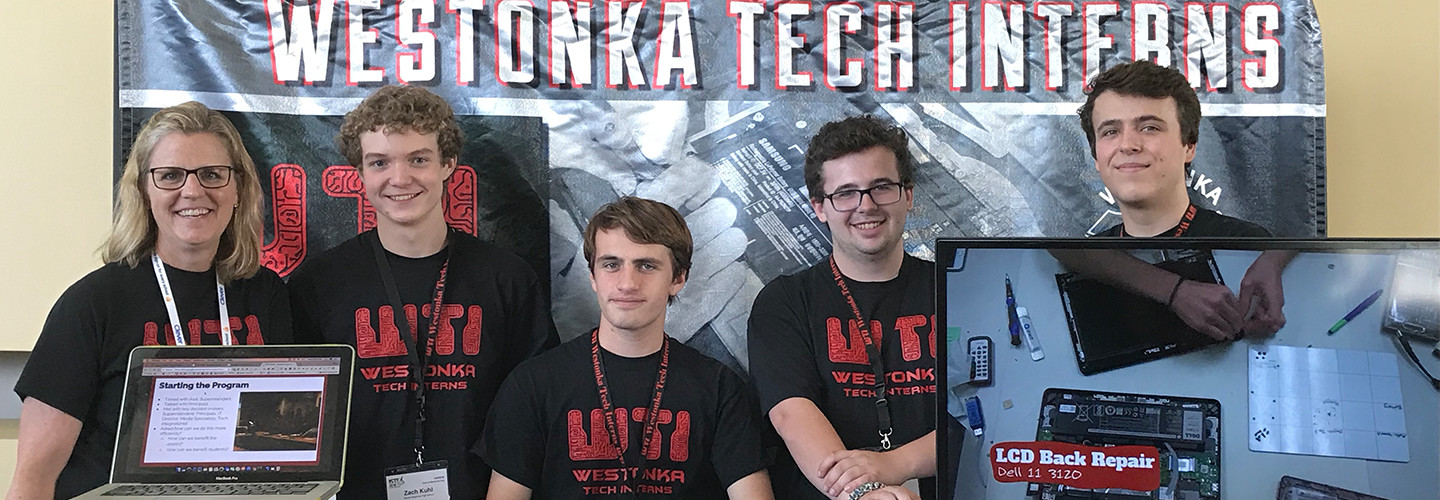ISTE 2018: Excite Students and Save Money with Tech Repair Programs
When business/technology teacher Sue Simonson needed help repairing damages to some of the 1,600 Chromebooks in her district’s one-to-one device initiative, she turned to the most tech-savvy people she knew — her students.
Ten of Simonson’s students at Mound Westonka High School now repair broken devices as part of her highly successful Westonka Technology Interns (WTI) program. As part of an elective class, the interns fix five to 20 broken Dell and Samsung laptops a day for Westonka Public Schools in Minnetrista, Minn., a district just west of Minneapolis that serves 2,300 students.
“I saw a program like this at a school in Chicago and saw the benefits for both the students and the district,” Simonson said about her reason for starting WTI. “The first year that we had our one-to-one program, we had to send everything out to Texas for repairs. It took six weeks to get something back. I knew we could do it better.”
Simonson, Secondary Technology Integration and Learning Specialist Kristin Wallace and four WTI students presented a poster Monday at ISTE’s 2018 Conference & Expo in Chicago about how to start a similar program. All four students — Noah Schmelzer and Zach Kuhl, who both recently graduated, Walker Laughon, 12th grade, and Jack Dahm, 11th grade — became Dell-certified technicians through the WTI course.
SIGN UP: Get more news from the EdTech newsletter in your inbox every two weeks!
Program Boosts Student Outcomes and School Funds
Now in its fifth year, WTI gives students, most of whom build PCs at home, hands-on experience with computer repairs as well as customer service practice.
“It gives them the opportunity to be leaders,” Simonson said. “We repair everything. They have a problem, and they’re not done with the problem until they solve it.”
The school district benefits by saving money. “The cost savings is incredible, now that the district no longer has to box things out and send them out,” Simonson said.
Each family pays $40 for insurance, to cover the cost of repairs and parts, which is the program’s biggest expense. Leftover insurance money is used to pay for more Chromebooks in the one-to-one program.
Class Could Be a Springboard to a Future in Tech
For some of the students, being in WTI has set them on a path toward a more certain future.
Zach Kuhl said he had always been interested in computers, but becoming certified and experiencing hands-on learning has him contemplating a career as a computer hardware engineer.
Walker Laughon was 14 when he built his first PC. Now he wants to work on computers on space shuttles. It’s his dream to someday work for NASA, and he’s one step closer after earning a scholarship to Iowa State for aerospace engineering.
Laughon said he values the experiences he gained through WTI.
“It felt like a real-life job,” he said. “I took away so much from this class. It turned from a conceptual thing to now I know this is what I want to do with my life.”
How to Start a Student Help Desk
Simonson had these tips for school districts wanting to embark on a similar repair program:
- Decide on your program goals.
- Involve your administration.
- Reach out to industry.
- Visit or reach out to WTI for a visit.
- Dive in and be flexible.
“It’s been a great way to empower our students,” she said. “Come see us and check it out.”
For more of the latest stories out of ISTE 2018, check out our conference page here.








